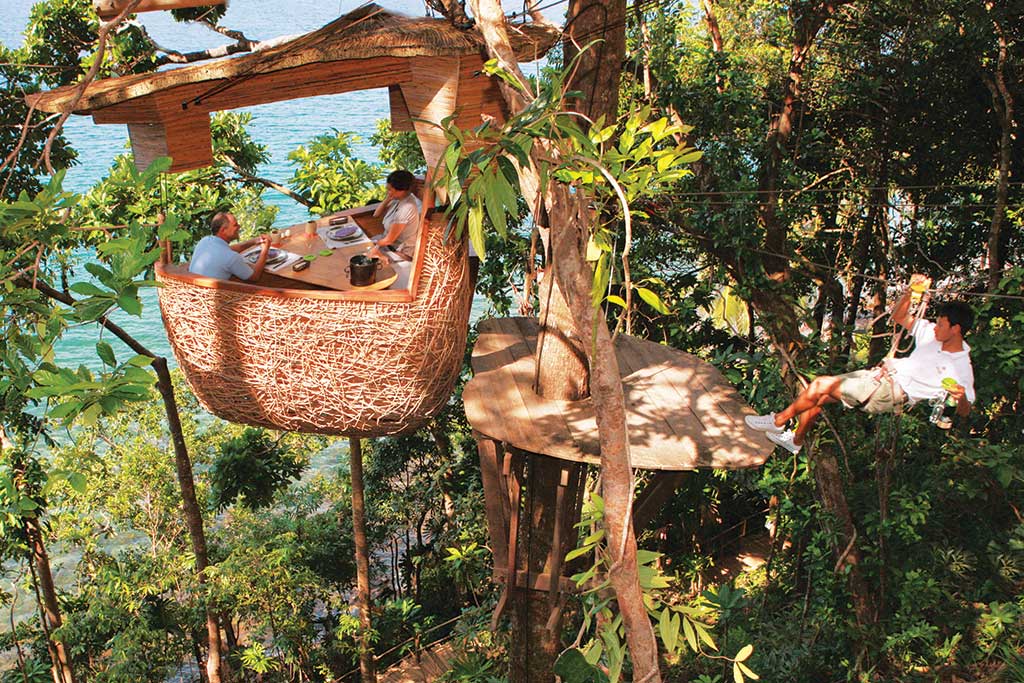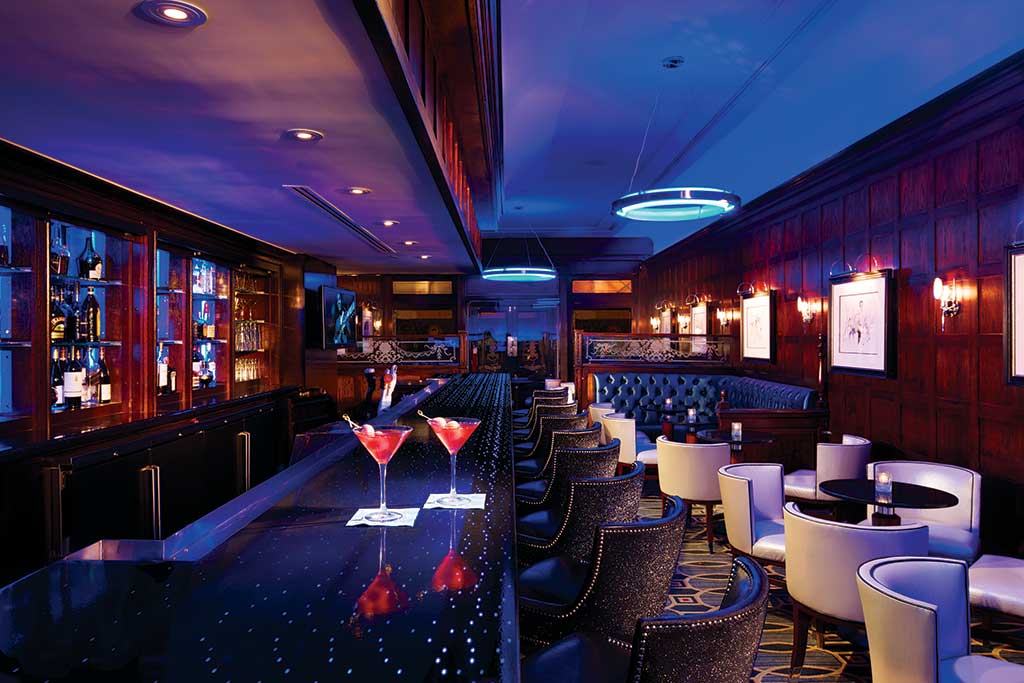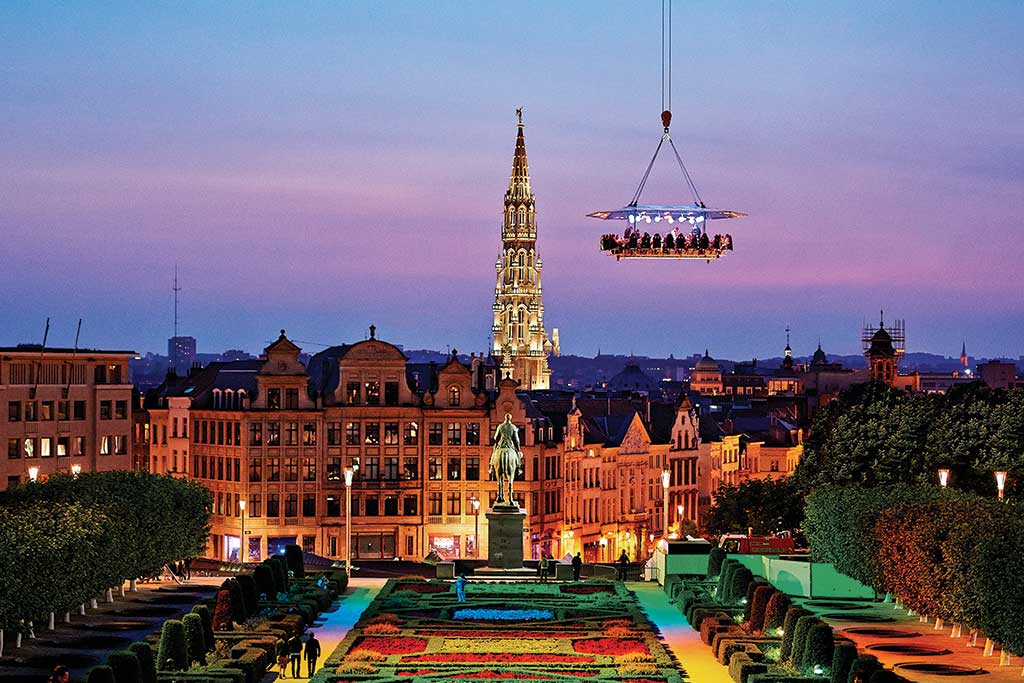PEARLS OF WISDOM
Founded in 1883, San Antonio’s legendary Pearl Brewery Company was so renamed in 1952 for its original Pearl beer, itself coined by an early German brewmeister who likened beer bubbles to pearls. By 1916, it was the largest brewery in Texas, producing over 110,000 barrels annually under the leadership of Emma Koehler who took over following her husband Otto’s death and successfully guided the brewery through Prohibition to its pinnacle years beyond.
Closed in 2001, the 22-acre brewery complex north of downtown has since been transformed into a dynamic food-centric neighborhood.
Anchored by a Latin-focused campus of the Culinary Institute of America, the complex features more than 14 chef-driven restaurants, several housed in former Pearl buildings, along with unique shops, farmers’ market, residences and more. After much anticipation, the hot-draw Pearl is readying for this month’s debut of its signature hotel property, Hotel Emma (www.thehotelemma.com).

Hotel Emma
Housed in the Pearl’s landmark 1894 brew house, the 146-room boutique (including top-floor suites with private terraces and custom-built mesquite dining tables for private chef-led experiences) has been created as its own culinary destination to further the neighborhood’s status as a center of culinary discovery.
Earlier this year, Executive Chef John Brand gave me a property-wide hardhat preview. Talk about tantalizing. Out of the public view since the late 90’s, the interiors revealed a wonderland of industrial and mechanical fixtures, all being incorporated into the update.
From the grand ballroom’s giant brewing tanks and ammonia cylinders to the pumps, gauges and massive fly wheel in the lobby and common areas to the grain hopper in the ceiling of one of the top-floor suites, it was heavy-duty inspiration all the way, and right in the wheelhouse of designers Roman & Williams.
“Our design philosophy is rooted in the unused, and at Hotel Emma, we were inspired to take overlooked items and elements and bring them to the forefront of our design,” explain Robin Standefer and Stephen Alesch, founders of the acclaimed Manhattan-based design firm. “We like to create a narrative based on the emotions and experience of a space, and Hotel Emma’s history has only added to the narrative that we’ve created.”
With culinary theming throughout, including the farmhouse-style Supper restaurant, Larder gourmet market, and culinary concierge services, their aesthetic is exemplified by the Sternewirth Bar and Clubroom.
Under the 25-foot-high vaulted ceilings and cast-iron spiral staircases of the former great hall, the bar runs under a floating steel mezzanine aglow with amber beer bottles. As throughout the hotel, the walls, columns, ceilings, and flooring have been largely left in their raw, original state, also illuminating the brewery’s past. And for the showcase element, 20-foot-tall cast-iron tanks have been reimagined as intimate social spaces, complete with curved banquette seating on the inside.

Soneva Kiri
POD CAST
Born of romance and guided by the SLOW LIFE (Sustainable, Local, Organic, Wellness, Learning, Inspiring, Fun, Experiences) philosophy, Soneva is a Bangkok-based company that develops and manages luxury resorts, residences, and spas in Thailand and the Maldives.
In 1995, founder, chairman and CEO Sonu Shivdasani and his wife Eva, a former fashion model and clothing designer whom he met while at Oxford and who serves as Soneva’s creative director, established their first resort along with their home on the deserted Maldives island of Kunfunadhoo.
Featuring luxury villas and private residences close to a UNESCO-protected coral reef, Soneva Fushi became the first ‘castaway’ resort in the Maldives, pioneering a trend for luxurious back-to-nature escapes.
Having established a design blueprint based on “locally crafted” and “environmentally responsible,” the couple introduced treetop dining, a singular dining experience at their next resort.
Opened in 2009, Soneva Kiri (www.soneva.com/soneva-kiri) is located on Koh Kood, a remote island paradise of tropical rainforests, emerald waterfalls, and white sandy beaches in the Gulf of Thailand an hour-plus by air south of Bangkok. With 36 pool villas arrayed on the island’s beach, hillsides, and clifftops, the amenity-rich resort offers moonlit dining on a private beach and chef-led dinners in a classic wooden Thai structure stilted among the mangroves.
Additionally, up to four guests can settle into an open cocoon-like pod swathed in woven rattan and be hoisted 16 feet up a tree, where then enjoy gourmet food and wines served by waiters flying back and forth on ziplines.
“The original concept was based on the growth of saprophytic fungi, which grow horizontally on tree trunks, while the pod cladding was inspired by the incredible efforts of the weaver bird, which creates extraordinary works of art for their loved ones,” explains Shivdasani. “The tree itself is a Masaang, native to Southeast Asia, and by our estimate, between 100 and 150 years old,” he continues. “We use a cable tensioning system, so there are no nails or bolts to harm the tree; along with offering our guests unique experiences, we are deeply committed to the environment.”

Algonquin Hotel
RHAPSODY IN BLUE
Holding court in Midtown Manhattan since 1902, the Beaux Arts Algonquin Hotel (www.algonquinhotel.com) is Gotham’s oldest continuously operating property. Part of Marriott’s Autograph Collection, the hotel’s signature fame is the Algonguin Round Table, or “Vicious Circle” of creative luminaries who lunched here virtually every day from 1919 to 1929. Other legends include the tradition (since 1923) of resident feline greeters (Hamlet for males, Matilda for females); and The Oak Room (now reserved for private functions), which opened as a cabaret in 198 and launched the careers of Harry Connick, Jr., Michael Feinstein, and many others.
In 1933, legendary actor John Barrymore persuaded the owner to install blue gels over the lighting in the hotel bar to help “one look more attractive.” Thus was born the Blue Bar, a classic meeting spot ever since
As part of a $5 million refresh in 2012, designer Susan Caruso, owner and principal designer of Marina del Rey, California-based Intra-Spec Hospitality Design (www.intra-spec.com) was hired to reimagine interiors, including the famed bar. Again, the inspiration was right at hand.
“With the Algonquin, we wanted to capture the glamour and excitement of its intrinsic link to American literary greats and the Roaring Twenties, while refreshing the spaces with a sense of modern luxury,” says Caruso. “Our intention was not so much to rewrite the design story as to expand upon the Algonquin’s many fascinating stories.”
Especially captivating was the Barrymore tale. “The lamp gels were to lessen his legendary hangovers,” relates Caruso. “We took this concept and sense of theatricality to a new level in reinventing the Blue Bar, juxtaposing modern elements against the classic architectural bones of the space.”
The result is a rhapsody in blue. With ribbons of blue-lit crystals beckoning you in, the expanded bar is bathed in cobalt tones which also encircle the chandeliers and wash down the large crystal wall fixture. Updated accent lighting illuminates the bar’s Al Hirschfeld drawings. The new seating sports sparkling black, white, and navy fabrics, all atop a jewel toned blue carpet, with sleek new blue LED lighting fixtures completing the scene.
“We feel that each property should have its own distinct personality and voice,” Caruso says. “The beauty of a National Literary Landmark building like the Algonquin is that it comes replete with rich and varied stories that help to inform the design.”


